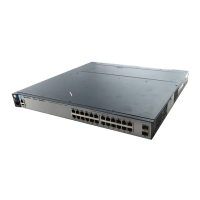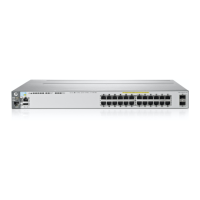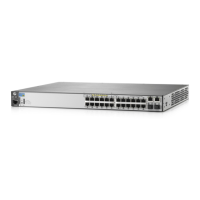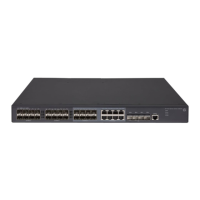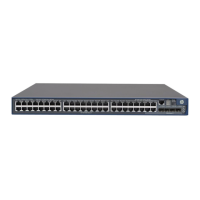mands as illustrated in figure 13-18. Table 13-1 describes the data that these
802.1X operation.
Figure 13-18. Example Showing Ports Configured for Open VLAN Mode
HP Switch# show port-access authenticator vlan
Port Access Authenticator VLAN Configuration
Port-access authenticator activated [No] : Yes
Access Unauth Auth
Port Control VLAN ID VLAN ID
---- -------- -------- --------
1 Auto 100 101
2 Auto 100 101
3 Auto 100 0
4 Auto 100 101
HP Switch# show port-access authenticator 1-4
Port Access Authenticator Status
Port-access authenticator activated [No] : No
Authenticator Authenticator Current Current % Curr. Rate
Port Status State Backend State VLAN ID Port COS Limit Inbound
---- ------ -------------- -------------- -------- ----------- --------------
1 Closed Connecting Idle 100 No-override No-override
2 Open Authorized Idle 101 No-override No-override
3 Closed Connecting Idle 100 No-override No-override
4 Closed Connecting Idle No PVID No-override No-override
In these two show outputs, an Unauth VLAN ID
appearing in the Current VLAN ID column for the
same port indicates an unauthenticated client is
connected to this port. (Assumes that the port is
not a statically configured member of VLAN 100.)
Items 1 through 3 indicate that an authenticated client is connected to port 2:
1.Open in the Status column
2.Authorized in the Authenticator State column
3.The Auth VLAN ID (101) is also in the Current VLAN ID column. (This assumes that the port is not a statically configured
member of VLAN 101.)
4.A “0” in the row for port 3 indicates there is no Authorized VLAN configured for port 3.
5.No PVID” means there is currently no untagged VLAN membership on port 4.
1
2
3
4
5
Note: Series 5400zl switches do not include the
Authenticator State and Authenticator Backend
State fields shown in this figure.
3

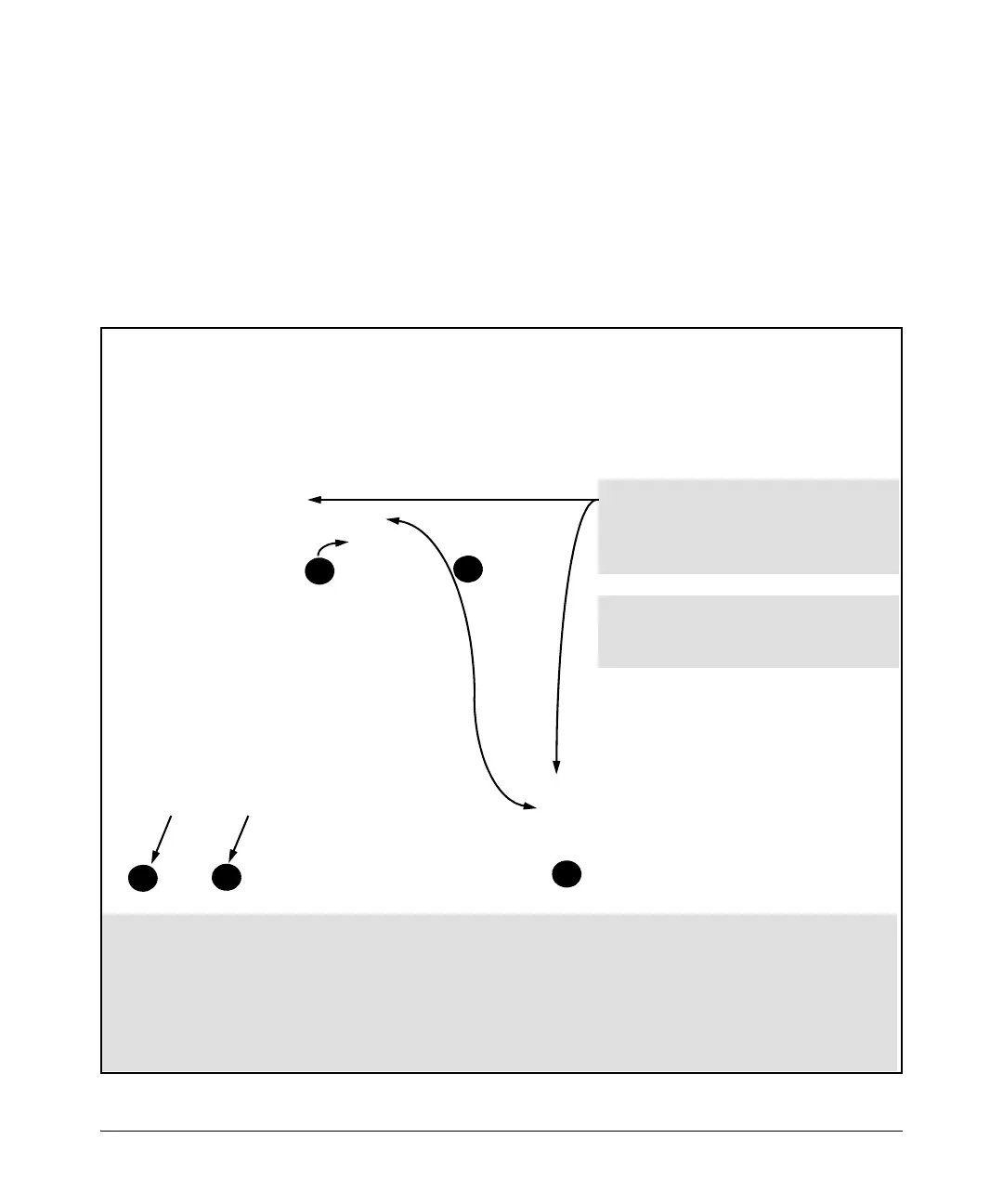